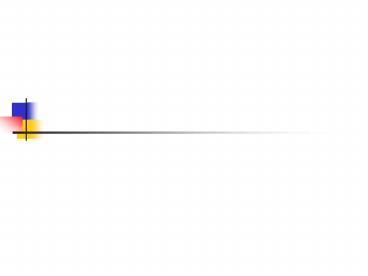Probability PowerPoint PPT Presentation
1 / 21
Title: Probability
1
(No Transcript)
2
Probability The Relative Frequency Definition
- We define probability as a relative frequency.
- If some event A occurs f times out of N possible
opportunities, we say that the probability of A
is f divided by N
3
Probability experiments
- We usually describe these as probability
experiments. - Thus if an experiment is repeated enough, say N
times, and if event A occurs f times, then the
probability of A is
4
Intuitive Definition
- Note that probability is an intuitive concept.
- It is both analytic and empirical.
- We theorize about probability analytically, and
hence use formal proof. - We think about it and demonstrate it with real
world observation.
5
Some Fundamentals
- The probability of an impossible event must be
zero (0.0) - The probability of a certain event must be 1.0
- Any and all probabilities must be between 0.0 and
1.0
6
Calculating Event probabilities
- The probability that an event will occur is the
sum of the sub-events that make comprise the
event.
7
Composite Events
- A composite event is one that comprised of
combinations of other events - Such as
- If either of two events occur
- If both of two events occur
8
Intersection
- Think in terms of Venn diagrams
- Picture two sets A and B
- What is the probability of being both A and or B?
A
B
C
9
The Addition Rule
- If A and B are two events, and their
probabilities are denoted by P(A) and P(B), then
the probability of either A or B or both is
denoted by P(A or B). - P(A or B) P(A) P(B) - P(A and B)
10
The Addition Rule - a simple example
- What is the probability of getting a head on
either of two tosses of a coin? - P(A) ½
- P(B) ½
- P(A and B)1/2 ½ ¼
- P(A or B) P(A) P(B) - P(A and B)
- P(A or B) ½ ½ - ¼ ¾
11
Mutually Exclusive events
- If two events are mutually exclusive, they cannot
both occur - (e.g. both a 2 and a 3 on a single role of a die)
- The addition rule for mutually exclusive events
is - P(A or B) P(A) P(B)
12
The Complement of an event
- The complement of an event occurs when the event
itself does not occur - P(A) P(A) 1.0
- P(A) 1.0 - P(A)
13
Joint Probabilities
- A joint probability is the probability that both
A and B will occur P(A and B)
14
Example of Joint Probabilities
15
Marginal Probabilities
16
Conditional Probabilities
17
The Multiplication Rule
18
Statistical Independence
19
(No Transcript)
20
(No Transcript)
21
(No Transcript)

